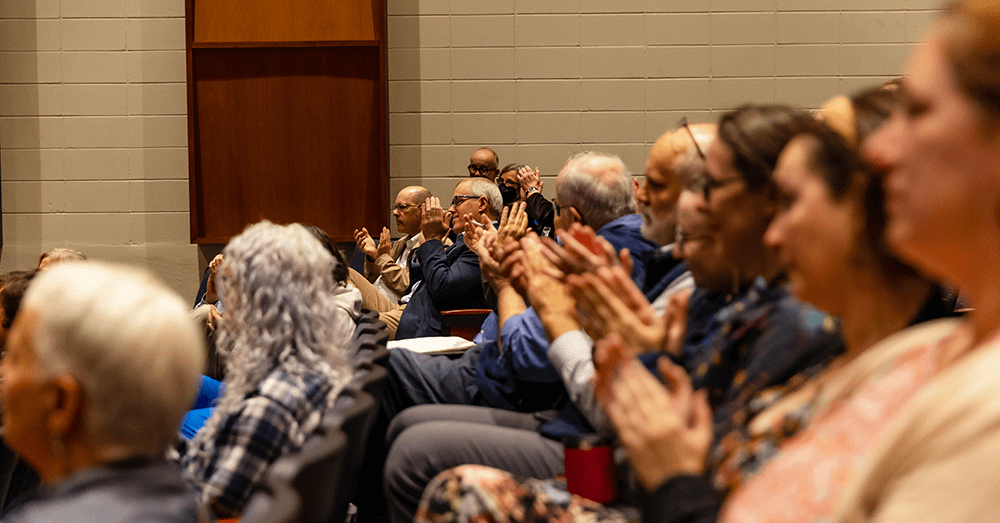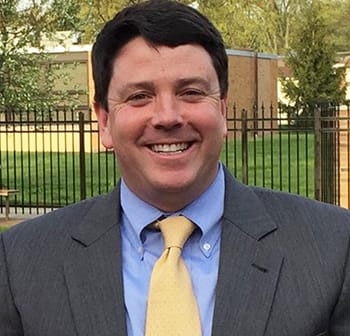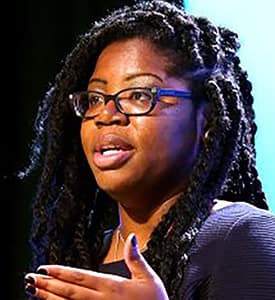Saint Michael’s soars in “Green College” notability
On the same day the Princeton Review named Saint Michael’s College among the top 50 most environmentally responsible colleges in the U.S. and Canada, College officials and a renewable-energy corporate partner from Burlington introduced a new “solar array” on Saint Michael’s-owned land by the Winooski River.
Princeton Review, the education services company known for its test prep programs and college rankings, ratings and guidebooks, profiles Saint Michael’s in the sixth annual edition of its free downloadable book, The Princeton Review’s Guide to 353 Green Colleges. This year, Saint Michael’s comes in at number 39 — its highest ranking ever. The Review released its 2015 online edition with the rankings on April 16.
The 2015 Edition profiles colleges with the most exceptional commitments to sustainability based on their academic offerings and career preparation for students, campus policies, initiatives, and activities. The profiles in the guide give college applicants information about each school’s admission requirements, cost and financial aid, as well as student body facts and stats.
Anybody traveling across the Lime Kiln Bridge toward the Saint Michael’s campus in recent months probably spotted the new “solar array” on a College-owned riverside hillside beside the bridge. The project, a Saint Michael’s partnership with Burlington-based Encore Redevelopment, is part of the College’s wider leadership over recent years in “green” technology, which has included cutting-edge geothermal-well technology to heat and cool new buildings.
Saint Michael’s and Encore held an event and tour Thursday afternoon to introduce the new 150kW net metered solar array to the campus community and wider public as part of the College’s “Earth Week” Celebrations leading up to Earth Day on April 22.
About 30 students and several science faculty along with President John Neuhauser were present on a glorious sunny afternoon. Edmundite Fr. Marcel Rainville performed a blessing for the array, quoting Pope Francis on matters of the environment in his prefacing remarks. Electrical contractors who did the work and other Encore and Saint Michael’s officials along with some media were on hand too. The fenced-in solar array is reached down the road by Merrill Cemetery at the jug handle, then to the right a few hundred yards.
That gathering at the site was followed by a demonstration of the solar array’s “data acquisition system” (DAS) in a campus science classroom. This “DAS” is technology that allows tracking of real-time performance of the array. Academic leaders say such data is of keen interest to environmental science students and faculty as a mechanism for online data collection of electrical output for possible research projects–for instance, by time of day or by year, or related to weather.
Participants in Thursday’s tour and information sessions heard also about other “green” initiatives that contributed to Saint Michael’s high Princeton Review ranking this year. For instance, Mike New, vice president for human resources, said that geothermal well technology used to heat the new Dion Family Student Center was so productive and efficient that the back-up gas-powered system never had to be turned on through the long cold winter for heating purposes.
The College recently moved forward with planning for a new student residence on the Northeast corner of campus, scheduled to open Fall of 2016 if all goes well, that would use even more advanced geo-thermal with an achievable goal of using that environmentally friendly power source for not just heating but all domestic hot-water in the new building.
Saint Michael’s Sustainability Coordinator Heather Ellis-Lynch said Saint Michael’s jump in the Princeton Review green rankings testified “to the hard work of so many faculty and students who have continually pushed the boundaries of what sustainability can and should mean on campus.”
She said she has been “trying to do more of engaging students and faculty with class research and projects with initiatives and letting them be the drivers of how they want to shape our campus.” Besides the solar array and geothermal systems, the college this fall launched a large 1.7-acre permaculture farm “that has been a great poster child of cross-campus departments coming together and having a say in what sustainable food means on campus,” she said.
Early stages of those initiatives boosted the Princeton Review rating, she speculated. The company developed the ranking list using data from its institutional survey for its Green Rating and its surveys of students attending the colleges. Ten data points from the institutional survey were factored into the assessment.
Data from the student survey included student ratings of how sustainability issues influenced their education and life on campus; administration and student support for environmental awareness and conservation efforts; and the visibility and impact of student environmental groups. More than 25 data points were weighted in the assessment. Schools with Green Rating scores of 83 or higher made it into this guide. Most of the schools (347) in this edition are in the U.S. Five are in Canada. One is in Egypt.
The 2015 Review Green Colleges profile of Saint Michael’s, under the heading “Green Facts,” notes many available transportation alternatives to reduce carbon emissions; the fact that 55 percent of the food budget is spent on local/organic food; the existence of a sustainability committee; a 7 percent LEED-certified new-construction rate, a 35 percent waste diversion rate, the offering of a sustainability-focused degree, a requirement for 100 percent of graduates to take a sustainability-related course, and the presence of a sustainability officer on campus.
A shining example
Construction of the Saint Michael’s solar array occurred between December and February. “It was a tough winter for continuous construction activity,” said Chad Farrell, principal of Encore Redevelopment, a Burlington based project-development company with a focus on 21st century solutions for underutilized property and community-scale renewable energy systems.
Farrell said that testing of the system “had to wait for a string of consecutive sunny days, which was not possible until early March, and then our contracts with the installation team call for 30 days of fully tested, uninterrupted operation at its intended capacity before the system can be considered fully commissioned.”
Based on that, the true placed-in-service date for the full project was April 2, 2015 — though a solar panel or two were operating as early as December, said Michael New, the College’s vice president for human resources. New’s initiative about a year ago got the project rolling after he saw the south-facing future site while driving over Lime Kiln and thought it would be a perfect location, knowing the College owned the land. He discussed his idea with President John Neuhauser along with local developer and alumnus Ernie Pomerleau ’69, who has been involved in such projects elsewhere in Vermont. With a green light and good information, he got in touch with local companies doing such work, which led him to Encore.
Farrell described some of the project’s particulars:
The solar array, with a nameplate capacity of 150kWac (210kWdc) will produce approximately 270,000 kilowatts hours (kWh) of electricity on an annual basis, with this energy being distributed into Green Mountain Power’s electrical system and with net metering credits showing up on the College’s electric bills. The project is located on a filled former limestone quarry that offered limited alternate development potential to the College.
Due to the complex nature of the tax benefits created by the project, Saint Michael’s College partnered with Encore based upon the company’s work developing similar projects across the State of Vermont.
Encore and the College worked to structure a creative financing agreement to make this project a reality. New, Farrell and Neal Robinson, the College’s vice president for finance and another major initiator of the project, all said that the financing agreement offers Saint Michael’s a compelling return on its initial investment as well as the ability for Saint Michael’s to assume an ownership position at the end of either 7 or 15 years of operations of the project. New says the process included getting Public Service Board approval, which Encore knew about, offering guidance. Abutters – primarily just an apartment complex across the Winooski River — also got to weigh in and voiced no objections to the project.
Other potential academic uses for the college, according to faculty leaders, include a solar unit in an environmental chemistry course, a meteorology course offered by the Physics Department, or a project for a computer science major on data-collection programs.





